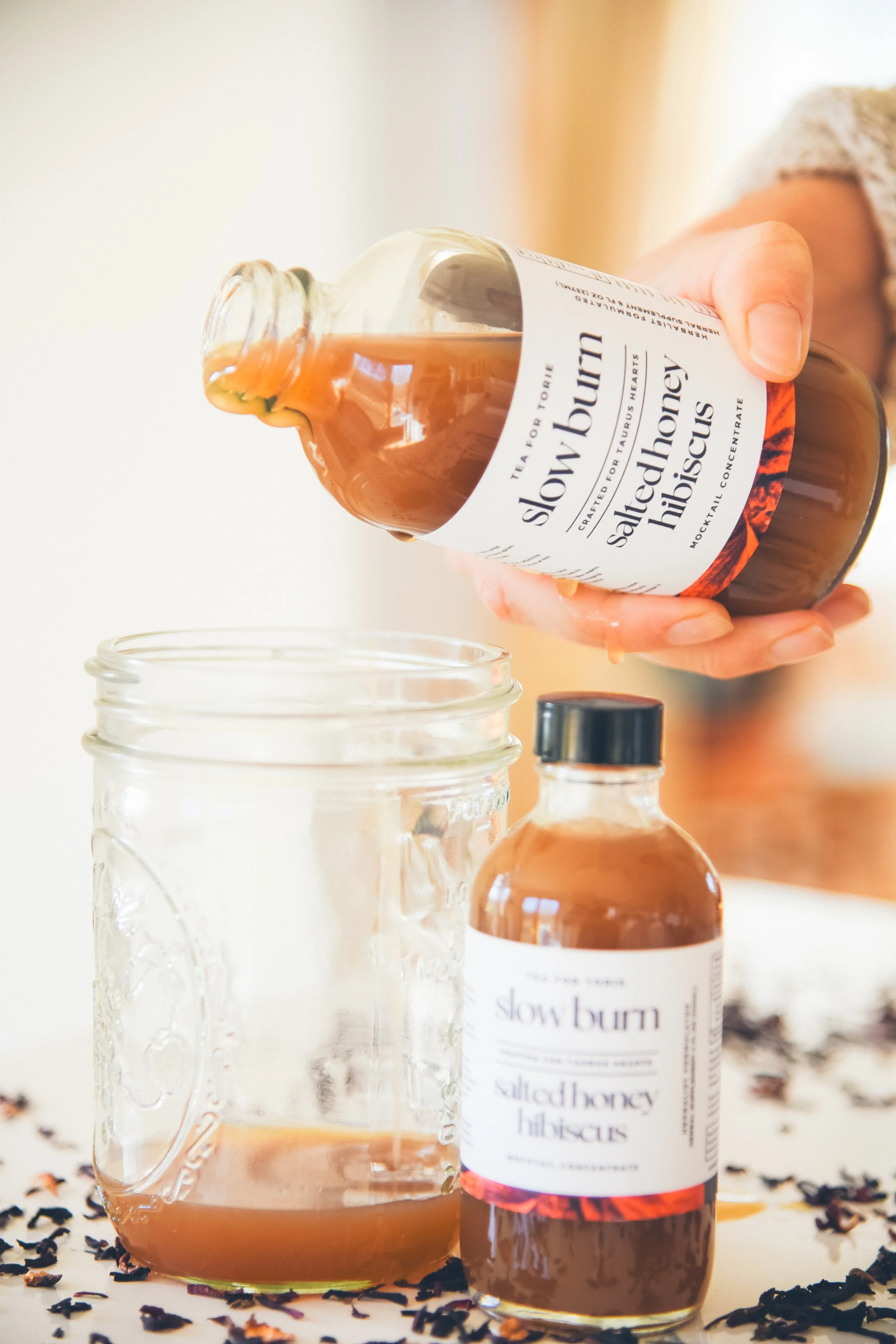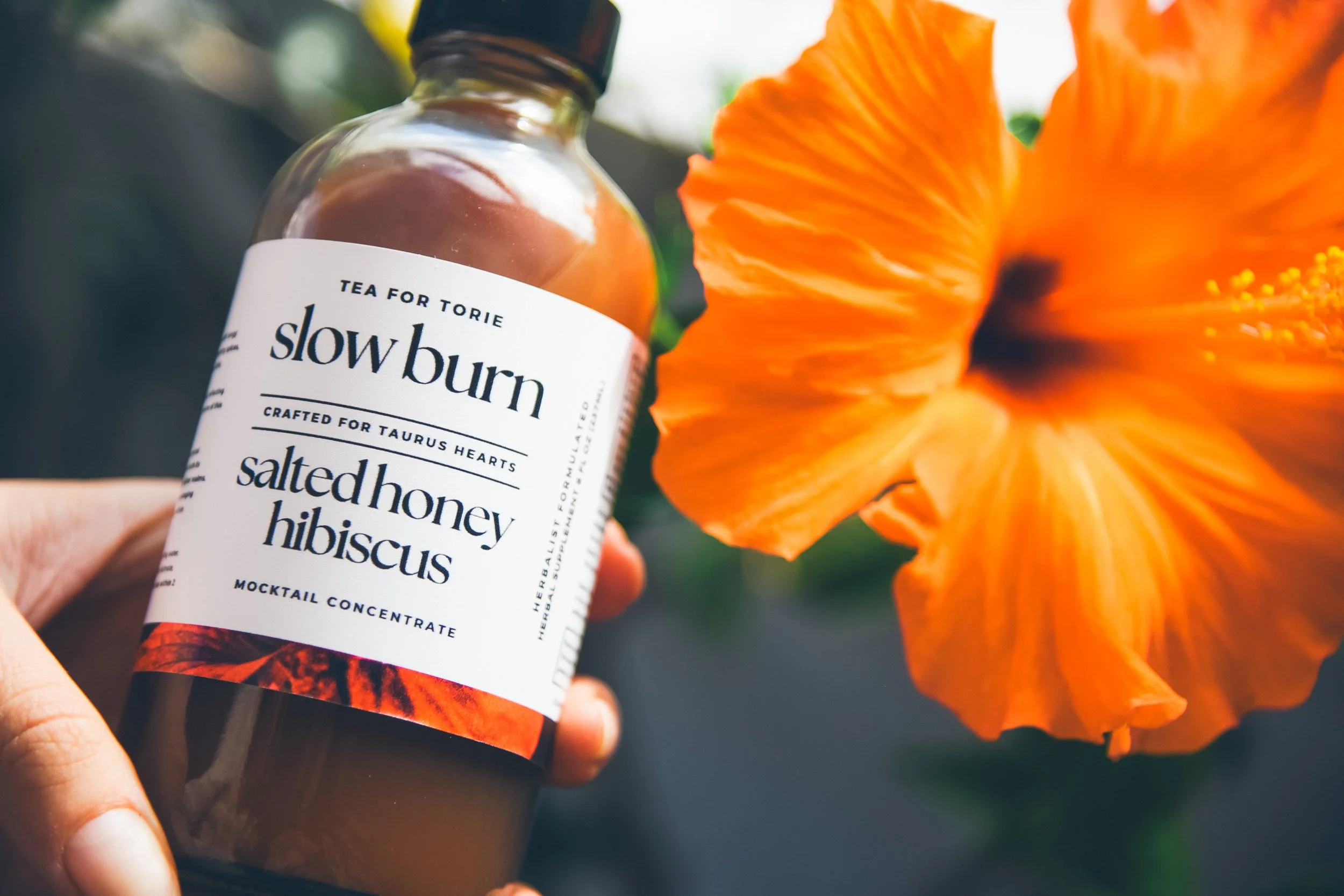How I’m Taming My Sweet Tooth with Herbs
I have a huge sweet tooth. Chocolate literally runs through my veins, it’s hereditary. I live at home while getting my business off the ground, and my mom’s love language is baking. There are baked goods in this house 24/7, plus a candy jar that never seems to run out.
So I’m constantly trying to resist the urge to snack on sweets all day. But I also don’t want to live in restriction mode. I’ve been asking myself (for years at this point): how can I enjoy treats occasionally without binging, and keep my blood sugar balanced?
That question sent me down a research rabbit hole into herbs that help stabilize glucose and curb cravings. These are the same tools I use in my own life, and that I teach in my herbal classes, to help people reconnect with their bodies and find balance naturally.
But first, let’s talk about why blood-sugar balance actually matters.
When we eat sugar or refined carbs, our blood glucose rises. The body releases insulin to shuttle that sugar into our cells for energy. But when there’s more glucose than our cells can handle, the excess sugar binds to proteins, a process called glycation.
Glycation creates sticky compounds known as advanced glycation end products (AGEs). These form when sugar literally caramelizes our tissues, making collagen rigid, dulling skin tone, and accelerating the visible signs of aging. Internally, they fuel inflammation, fatigue, and hormonal chaos.
In short, unstable blood sugar doesn’t just affect your waistline, it affects your energy, mood, hormones, and how fast you age.
The good news? You can support your body’s ability to regulate blood sugar naturally with herbs, minerals, and functional drinks that buffer glucose spikes, reduce cravings, and improve insulin sensitivity over time.
1. Hops: Not Just for Beer
Hops (Humulus lupulus) are best known for beer, but they also contain compounds like xanthohumol, which may support insulin function.
In a 2023 double-blind clinical trial on postmenopausal women, 500 mg/day of standardized hop extract for eight weeks significantly improved insulin sensitivity and reduced fasting glucose. Researchers believe this is partly due to hops’ phytoestrogenic activity, making them especially beneficial for women navigating metabolic and hormonal shifts.
How to use:
Brew 1 tsp dried hop flowers in hot water for a calming tea, or take the tincture 1–2 times daily. Because hops are mildly sedative, they’re best used in the evening, the perfect way to relax while supporting metabolism.
2. Apple Cider Vinegar: A Natural Blood Sugar Buffer
Several human trials have found that taking 1–2 tablespoons (15–30 mL) of vinegar before a meal can lower post-meal glucose spikes and improve insulin sensitivity by up to 34%, particularly in women.
Acetic acid, the main active compound in vinegar, slows down carbohydrate absorption and increases the uptake of glucose into cells, helping you stay full longer and avoid crashes.
How to use:
Mix 1 tablespoon raw ACV into water or your favorite mocktail before meals. Always dilute it to protect your teeth and stomach lining.
Why Alcohol and Blood Sugar Don’t Mix
Alcohol temporarily blocks the liver from releasing glucose, leading to dramatic highs and lows in blood sugar. It also raises cortisol, disrupts sleep, and increases sugar cravings the next day, which is why “wine Wednesdays” often lead to dessert Thursdays.
Mocktails, on the other hand, give you the same unwind ritual without the metabolic chaos.
My Top Pick for a Functional Buzz
My Slow Burn Mocktail Concentrate is made with raw apple cider vinegar, hibiscus, and local honey. It’s one of my favorite swaps for evening cocktails, bright, tart, and slightly floral, it delivers the satisfaction of a drink while helping to balance your blood sugar and support digestion.
Instead of reaching for a sugary mojito or glass of wine, try a splash of Slow Burn over sparkling water or ice. You’ll still get that “ahh” moment, but without the crash, the bloat, or the regret.
3. Gymnema sylvestre: The “Sugar Destroyer”
Gymnema has been used in Ayurveda for centuries to reduce sugar cravings, and modern science backs it up. In a 2017 study, 400 mg/day of Gymnema extract for three weeks improved insulin function and reduced fasting glucose.
Here’s the fun part: Gymnema’s active compounds temporarily block the tongue’s sweet receptors, making desserts taste dull. Women in the study reported faster craving reduction, likely due to heightened taste sensitivity and hormonal differences in glucose response.
How to use:
I personally find the tincture is the best form to use before meals. Avoid combining with insulin or diabetes medication unless supervised by a practitioner.
4. Ginger: Warming and Stabilizing
Ginger supports digestion, reduces inflammation, and stabilizes blood sugar. A 2019 meta-analysis of 14 clinical trials found that 2–3 g/day of ginger lowered fasting glucose and HbA1c levels, particularly in women with metabolic syndrome.
How to use:
Add ½–1 tsp grated fresh ginger to tea or warm water after meals. It supports detoxification, boosts metabolism, and curbs post-meal fatigue.
5. Cinnamon: Sweet Support
Cinnamon’s balancing effects are well-documented. A 2022 review of 18 clinical trials showed cinnamon supplementation reduced fasting glucose and HbA1c, with the strongest results in women under 45. Doses ranged from 1–6 g/day (½–1 tsp).
Pro tip: Use Ceylon cinnamon, it’s milder and safer for long-term use than cassia cinnamon. Sprinkle it on fruit, oats, or your favorite mocktail for a daily metabolic boost.
Why I Believe in Herbs and Ritual
Between my mom’s endless baking and my herbal studies, I’ve realized balance isn’t about restriction, it’s about intention.
Herbs and functional mocktails are tools that bring the body back into rhythm. When your blood sugar is stable, your mood is steadier, your energy lasts longer, and your cravings lose their power.
This is what I teach in my classes, it’s not about perfection, it’s about partnership with your body.
Join Me: Yin Yoga Reset at Vibe Yoga
If you’re in Rhode Island, join me this Thursday evening at Vibe Yoga for a nourishing reset before the holidays.
We’ll sip functional mocktails, explore herbs that help balance blood sugar, and end with a grounding Yin Yoga session designed to support digestion and release tension.
You’ll walk away feeling clear, light, and connected, ready to move into the holiday season without the sugar fog.
Final Sip
None of this is medical advice. The dosages above are based on published studies, but everyone’s body is unique. Listen to your body, consult your practitioner if needed, and use this as inspiration, not prescription.
If this resonated, share it with a friend (or fellow sweet-tooth survivor) and tag me @teafortorie if you try any of these herbal swaps.
Sources
Legette, L. L. et al. (2023). Xanthohumol supplementation improves insulin sensitivity in postmenopausal women. Frontiers in Nutrition, 10:1123456.
Johnston, C. S. et al. (2004). Vinegar improves insulin sensitivity to a high-carbohydrate meal in insulin-resistant subjects. Diabetes Care, 27(1), 281–282.
Shanmugasundaram, K. R. et al. (2017). Use of Gymnema sylvestre leaf extract in the control of blood glucose levels. Journal of Ethnopharmacology, 201, 155–162.
Mahluji, S. et al. (2019). Effects of ginger supplementation on insulin resistance and glycemic control: A meta-analysis. Complementary Therapies in Medicine, 43, 1–8.
Akilen, R. et al. (2022). Cinnamon intake lowers fasting blood glucose and HbA1c: A systematic review. Nutrition Research, 100, 56–67.






